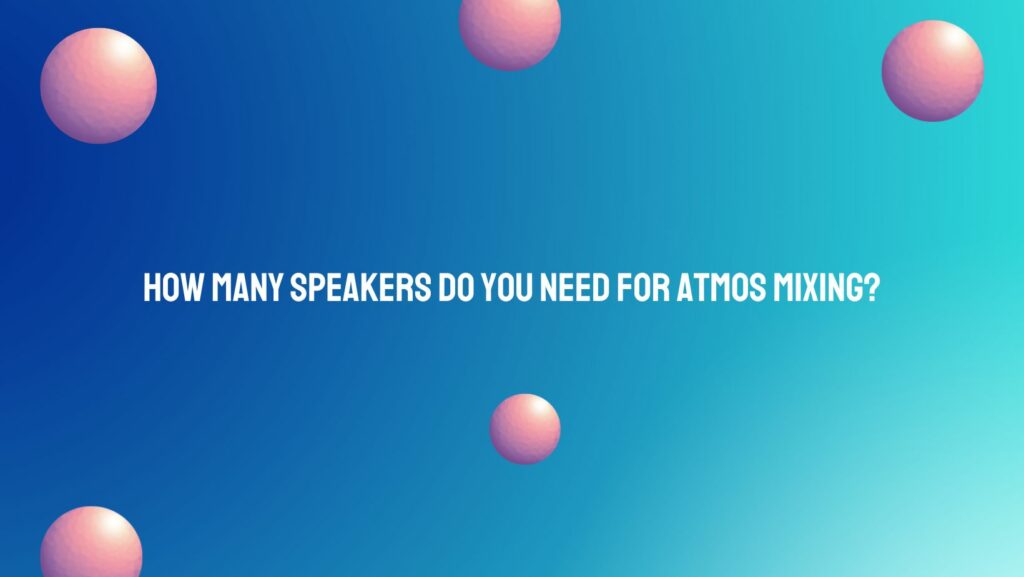In the realm of audio production, Dolby Atmos has revolutionized the way sound is mixed and experienced. The technology’s ability to create a three-dimensional audio landscape prompts a crucial question for content creators: How many speakers do you need for Atmos mixing? In this article, we delve into the considerations and intricacies of speaker configurations in Dolby Atmos mixing, exploring the balance between technical requirements and creative possibilities.
Dolby Atmos Mixing Essentials:
Dolby Atmos is known for its capacity to immerse listeners in a three-dimensional audio environment by introducing height channels to the traditional surround sound setup. In the context of mixing, the challenge lies in determining the optimal number of speakers to achieve a balanced, immersive, and artistically expressive soundscape.
- Minimum Channel Requirements:
At its core, Dolby Atmos mixing requires a minimum of a 7.1.2 speaker configuration, which includes seven traditional surround sound speakers, a subwoofer, and two overhead speakers for the height dimension. However, the technology is scalable, accommodating more speakers for enhanced precision and complexity in audio object placement.
- Creative Flexibility:
Dolby Atmos offers a degree of creative freedom that extends beyond the minimum requirements. While 7.1.2 provides a solid foundation, content creators have the option to expand their setups to include additional overhead and surround channels. This flexibility empowers creators to design more intricate and detailed sonic experiences.
- Object-Based Audio:
Dolby Atmos distinguishes itself by employing object-based audio, enabling sound elements to be treated as individual objects rather than being tied to specific channels. This means that a soundscape can be crafted with remarkable precision, regardless of the number of speakers, as long as the system meets the minimum requirements.
- Large-Scale Installations:
For larger-scale productions, such as commercial cinemas, studios, or premium home theaters, a more extensive speaker configuration might be employed. Configurations like 9.1.4 or even 11.1.6 can provide a heightened sense of dimensionality, offering content creators a more expansive canvas for their artistic expression.
- Optimizing Speaker Placement:
Regardless of the number of speakers, precise placement is paramount in Dolby Atmos mixing. Ensuring that speakers are strategically positioned, including overhead elements, allows for accurate sound object placement, contributing to a more realistic and immersive auditory experience.
- Rendering and Downmixing:
Content mixed for Dolby Atmos can be rendered for various playback environments. This versatility enables the creation of a core mix that can be downmixed to accommodate systems with fewer speakers while still retaining the essence of the three-dimensional audio experience.
Conclusion:
The ideal number of speakers for Dolby Atmos mixing is ultimately a dynamic consideration that depends on the specific requirements of the project and the creative vision of the content creator. Whether working with the minimum 7.1.2 configuration or embracing a more extensive setup, the key lies in striking a balance between technical specifications and the artistic intent. Dolby Atmos empowers creators with the tools to craft immersive soundscapes, inviting them to explore the boundaries of audio storytelling in ways that were once unimaginable.


